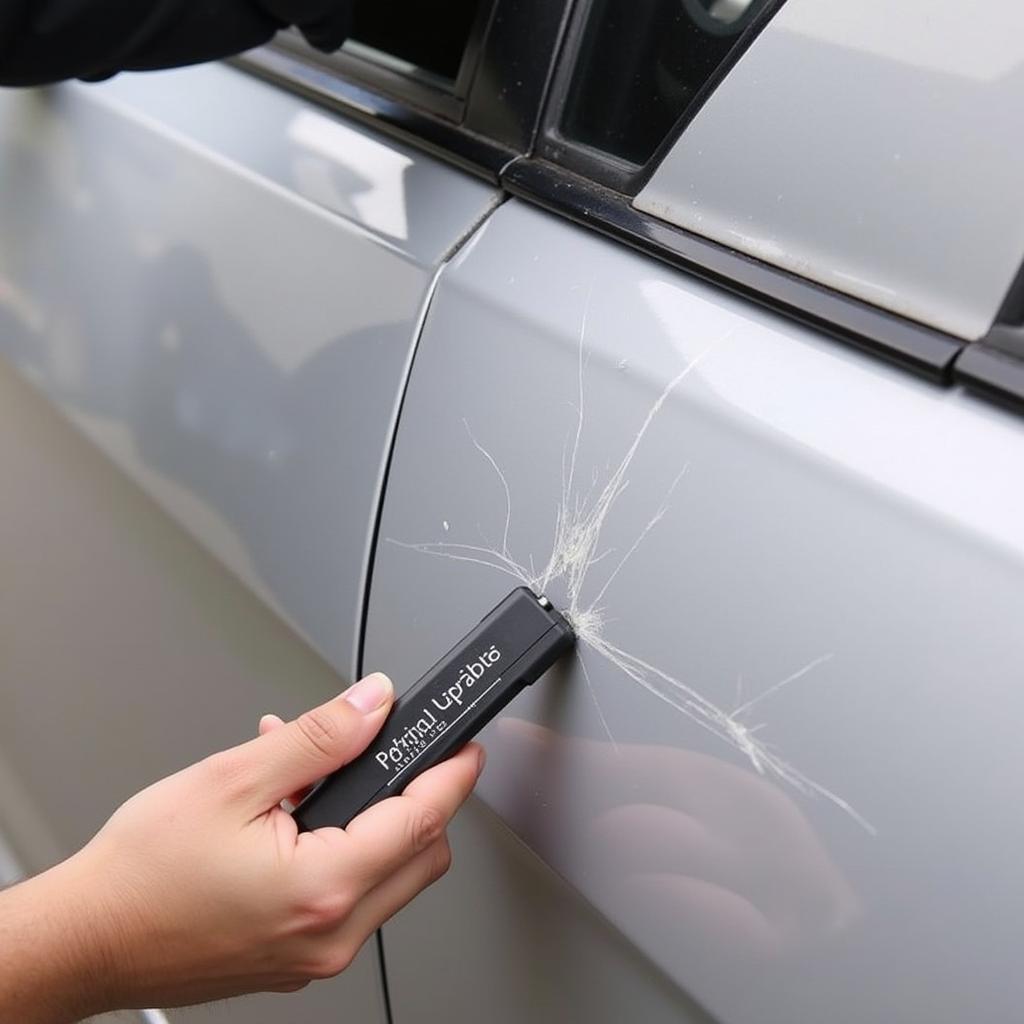Paint car repair is an essential aspect of vehicle maintenance, restoring both its aesthetic appeal and protecting it from further damage. Whether it’s a minor scratch or a major dent, understanding the different repair options, costs, and processes is crucial for making informed decisions. This guide dives deep into the world of paint car repair, offering expert advice and practical tips to help you navigate the process with confidence. You’ll learn how to assess damage, choose the right repair method, and ensure a flawless finish. Let’s get started!
Understanding the intricacies of paint car repair can save you time and money. From DIY fixes for minor scratches to professional repairs for more significant damage, knowing your options is key. This guide will cover everything from assessing the damage to finding a reputable repair shop, ensuring you get the best results for your vehicle. Looking for information on specific spectral paint repair? Check out our spectral paint car repair directions.
Types of Paint Car Repair
Different types of damage require different repair approaches. Let’s explore some common paint car repair methods:
- Spot Repair: Ideal for minor chips and scratches, spot repair involves blending new paint seamlessly into the existing finish. This localized approach minimizes cost and preserves the original factory paint as much as possible.
- Panel Repair: For larger areas of damage, panel repair may be necessary. This involves repainting an entire panel to ensure a uniform color and finish.
- Complete Repaint: While less common, a complete repaint is sometimes necessary for extensive damage or to change the vehicle’s color entirely.
Assessing the Damage
Before deciding on a repair method, it’s vital to assess the extent of the damage. Is it a superficial scratch, a deep gouge, or something in between? The depth and size of the damage will dictate the best course of action. Need to know how to blend paint for your car repair? We have a guide for that: how to blend paint car repair.
Determining the Severity
- Superficial Scratches: These often only affect the clear coat and can be addressed with polishing or touch-up paint.
- Deep Scratches: Reaching the base coat or primer requires more extensive repair, possibly involving sanding and repainting.
- Dents: Dents often accompany paint damage and necessitate bodywork before repainting.
Choosing a Repair Shop
Selecting the right repair shop is essential for a quality paint job. Look for shops with certified technicians, positive customer reviews, and a portfolio of previous work. Cost is also a factor, but don’t prioritize price over quality. Wondering about the cost of chipped paint car repair? We have resources that can help.
Key Considerations
- Certifications and Experience: ASE-certified technicians are a good indicator of a shop’s commitment to quality.
- Customer Reviews: Online reviews provide valuable insights into a shop’s reputation and customer satisfaction.
- Warranty: A reputable shop will stand behind their work with a warranty.
DIY vs. Professional Repair
Minor scratches can often be tackled with DIY solutions like touch-up paint and polishing compounds. However, more significant damage requires professional expertise to ensure a seamless and durable repair. Curious about no paint car repair? Explore our resources for more information.
“A high-quality paint car repair not only restores the vehicle’s appearance but also protects it from rust and corrosion,” says John Smith, Automotive Repair Specialist at Smith Auto Body. “Choosing the right repair method and a reputable shop is crucial for achieving a long-lasting and aesthetically pleasing result.”
Cost of Paint Car Repair
The cost of paint car repair varies depending on the extent of the damage, the type of paint used, and the labor rates in your area. Minor repairs can cost a few hundred dollars, while more extensive repairs can run into thousands. You can find more information about the scratch paint car repair cost.
“Don’t underestimate the importance of proper preparation before painting,” advises Sarah Jones, Lead Technician at Jones Auto Repair. “Thorough cleaning, sanding, and priming are essential for achieving a smooth and durable finish.”
Conclusion
Paint car repair is an investment that preserves your vehicle’s value and appearance. By understanding the different repair options, assessing the damage accurately, and choosing a reputable repair shop, you can ensure a successful and satisfying outcome. Remember, a well-maintained finish not only looks great but also protects your vehicle from the elements, extending its lifespan.
FAQ
- How long does paint car repair take? The timeframe varies depending on the extent of the damage, typically ranging from a few hours to several days.
- Can I match my car’s paint color exactly? Yes, professional shops can use computerized color matching systems to ensure a perfect match.
- What should I do after a paint car repair? Avoid washing the car for a specified period and follow the shop’s recommendations for aftercare.
- How do I prevent further paint damage? Regular washing, waxing, and parking in covered areas can help protect your car’s paint.
- Is DIY paint repair always a good idea? DIY is suitable for minor scratches, but larger or more complex damage requires professional attention.
- How do I choose the right paint for my car? Consult your owner’s manual or a reputable auto parts store to ensure you select the correct paint code and type.
- What is the difference between single-stage and two-stage paint? Single-stage combines color and clear coat, while two-stage involves applying them separately.
Need help with your car repair? Contact us via WhatsApp: +1(641)206-8880 or Email: [email protected]. Our 24/7 customer service team is ready to assist you.


